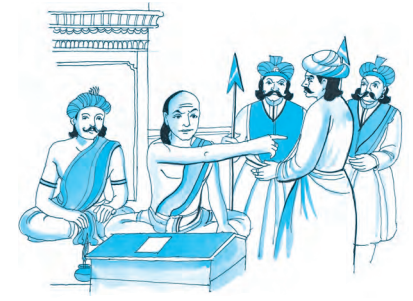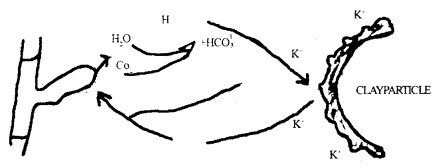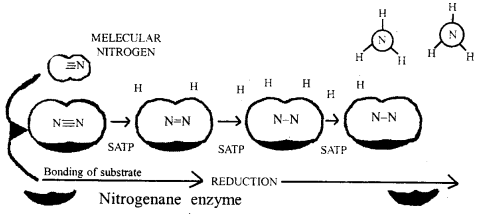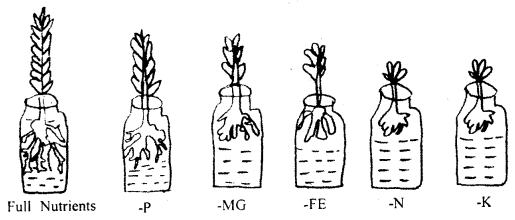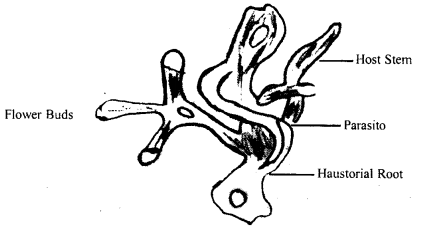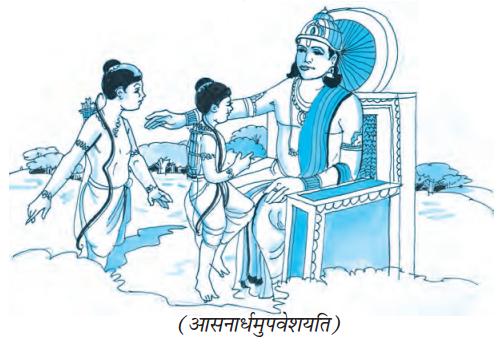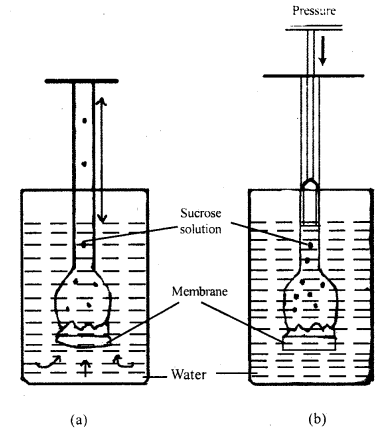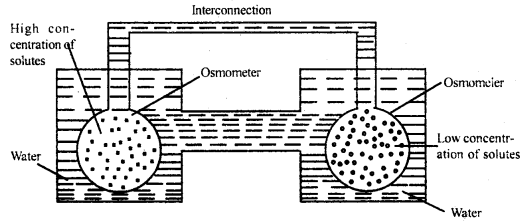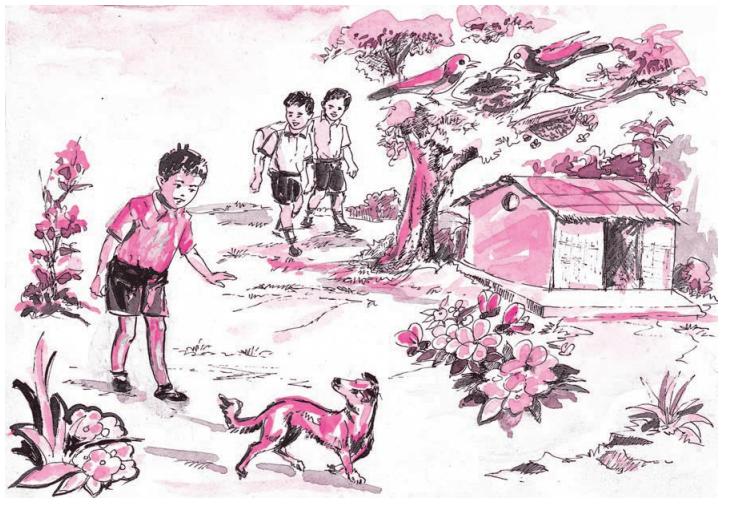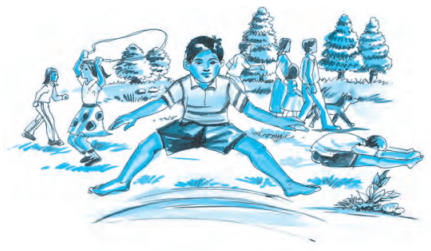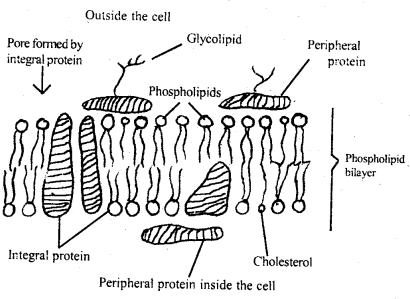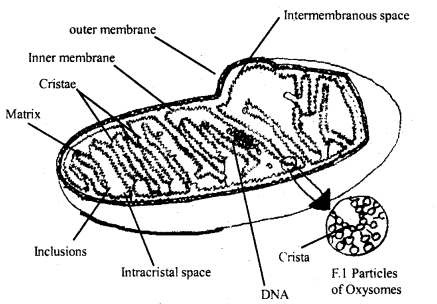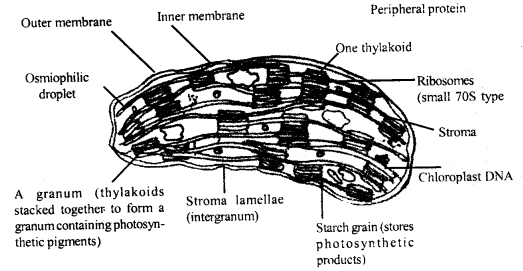By going through these CBSE Class 10 Sanskrit Notes Chapter 12 अनयोक्त्यः Summary, Notes, word meanings, translation in Hindi, students can recall all the concepts quickly.
Class 10 Sanskrit Chapter 12 अनयोक्त्यः Summary Notes
अन्योक्तयः पाठपरिचयः
अन्योक्ति अर्थात किसी की प्रशंसा अथवा निन्दा अप्रत्यक्ष रूप से अथवा किसी बहाने से करना। जब किसी प्रतीक या माध्यम से किसी के गुण की प्रशंसा या दोष की निन्दा की जाती है, तब वह पाठकों के लिए अधिक ग्राह्य होती है। प्रस्तुत पाठ में ऐसा ही सात अन्योक्तियों का सङ्कलन है जिनमें राजहंस, कोकिल, मेघ, मालाकार, सरोवर तथा चातक के माध्यम से मानव को सवृत्तियों एवं सत्कर्मों के प्रति प्रवृत्त होने का संदेश दिया गया है।
अनयोक्त्यः Word Meanings Translation in Hindi
1. एकेन राजहंसेन या शोभा सरसो भवेत्।
न सा बकसहस्रेण परितस्तीरवासिना।।
शब्दार्थाः
सरसः – तालाब (नदी) की। भवेत् – हो/होती है। बकसहस्रेण – हज़ारों बगुलों से। परितः – चारों ओर। तीरवासिना – किनारे पर रहने वाले।
हिन्दी अनुवाद
एक राजहंस से जो शोभा तालाब (नदी) की होती है। वह शोभा किनारों पर चारों ओर रहने वाले हजारों बगुलों से नहीं होती है अर्थात् एक विद्वान से संसार अथवा समाज का कल्याण (शोभा) होता है परन्तु उसी समाज में रहने वाले हज़ारों मूों से उसकी शोभा नहीं होती है।
सन्धिः-विच्छेदो वा
पदानि = सन्धिं/सन्धिविच्छेद
सरसः + भवेत् = सरसो भवेत्
परितस्तीरवासिना = परितः + तीरवासिना
समासो-विग्रहो वा
पदानि – समासः/विग्रहः
राजहंसेन = राज्ञः हंसः, तेन
बकसहस्त्रेण = बकानाम् सहस्रम् तेन
तीरवासिना = तीरस्य वासी, तेन
प्रकृति-प्रत्ययोः विभाजनम्
पदानि = प्रकृतिः + प्रत्ययः
तीरवासिना = तीरवास + इन् (णिन्)
अव्यय-पद-चयनम् वाक्य प्रयोगश्च
अव्ययः = अर्थः = वाक्येषु प्रयोगः
परितः = चारों ओर = विद्यालय परितः पुष्पाणि सन्ति।
न = नहीं = ते कदापि असत्यं न वदन्ति।
विशेषण-विशेष्य चयनम्
विशेषण = विशेष्यः
एकेन = राजहंसेन
या = शोभा
तीरवासिना = बकसहस्रेण
विपर्ययपदानि
पदानि = विपर्ययाः
अनेकेन = एकेन
बकेन = राजहसेन
नद्याः = तडागस्य
या = सा
सर्वतः = परितः
2. भुक्ता मृणालपटली भवता निपीता
न्यम्बूनि यत्र नलिनानि निषेवितानि।
रे राजहंस! वद तस्य सरोवरस्य,
कृत्येन केन भवितासि कृतोपकारः॥
शब्दार्थाः
भुक्ता – खाया है। मृणालपाटली – कमल नाल के समूह। भवता – आपके द्वारा। निपीतानि – भलीभाँति पाए गए। अम्बूनि – जलों को/जल को। नलिनानि – कमल के फूलों को। निषेवितानि – अच्छी तरह से सेवन किया है। कृत्येन – काम से। भविता असि – चुकाओगे। कृतोपकारः – किए गए उपकार/किया गया उपकार।
हिन्दी अनुवाद
जहाँ आपने कमलनाल के समूह को खाया है, जल को अच्छी तरह से पीया है, कमल के फलों को सेवन किया हैं। हे राजहंस! बोलो, उस तालाब (सरोवर) का किस काम से किया गया उपकार चुकाओगे? अर्थात् जिस देश, जाति, धर्म और संस्कृति से हे मानव! तुम्हारा यह जीवन बना (निर्मित) हुआ है उसका बदला किस कार्य से चुका सकोगे? अतः इन सभी के ऋणी रहो और सम्मान करो।
सन्धिः-विच्छेदो वा
पदानि = सन्धि / सन्धिच्छेदं
निपीतान्यम्बूनि = निपीतानि + अम्बूनि
भवितासि = भविता + असि
कृतः + उपकारः = कृतोपकार:
समासो-विग्रहो वा
पदानि = समासः / विग्रहः
मृणाल पाटली = मृणालानाम् पाटली
निपीताम्बूनि = निपीतानि अम्बूनि
कृतोपकारः – कृतः उपकारः / कृतः च सः उपकार:
प्रकृति-प्रत्ययो: विभाजनम्
पदानि = प्रकृतिः + प्रत्ययः
भुक्ता = भुज् + क्त + टाप्
पाटली = पाटल + ङीप्
निपीतानि = नि + पा + क्त
कृत्येन = कृ + यत्
कृत = कृ + क्त
निषेवितानि = नि + सेव् + क्त
विशेषण-विशेष्य चयनम्
विशेषण = विशेष्यः
भुक्ता = मृणालपाटली
निपीतानि = अम्बूनि
केन = कृत्येन
निषेवितानि = नलिनानि
तस्य = सरोवरस्य
पर्यायपदानि
पदानि = पर्यायाः
जलानि = अम्बूनि
कमलानि = नलिनानि
तडागस्य = सरोवरस्य
हितम् = उपकारः
3. तोयैरल्पैरपि करुणया भीमभानौ निदाघे,
मालाकार! व्यरचि भवता या तरोरस्य पुष्टिः।
सा किं शक्या जनयितुमिह प्रावृषेण्येन वारां,
धारासारानपि विकिरता विश्वतो वारिदेन॥
शब्दार्थाः
भीमभानौ – सूर्य के अधिक तपने पर। निदाघे – गर्मी में। तोयैः – जलों से। भवता-आपके द्वारा। करुणया – दया से। तरो: – पेड़ की। व्यरचि – की है। वाराम् – जलों के। प्रावृषेण्येन – वर्षा काल के। विश्वतः – चारों ओर से। धारासारान् – धाराओं के प्रवाहों को। विकिरता – बिखेरते हुए। वारिदेन – बादल से। इह – इस संसार में। जनयितुम् – उत्पन्न करने में/के लिए। शक्या – समर्थ है।
हिन्दी अनुवाद
हे माली! सूर्य के तेज चमकने (तपने) पर गर्मी के समय में थोड़े जल से भी आपने दया के इस पेड़ की जो पुष्टि (बढ़ोतरी) की है। जलों को वर्षा काल के चारों ओर से धाराओं के प्रवाहों को भी बिखरते हुए (बरसाते हुए) बादल से इस संसार में वह (पेड़ की) पुष्टि क्या की जा सकती है? अर्थात् उत्तम और सम्पुष्ट जीवन जीने के लिए सुख अर्थात् सुखयुक्त वस्तुओं की अधिकता भी मानव जीवन को पूर्णतया सक्षम नहीं बनाती है। उसके लिए सुख अथवा दुःख भरे क्षणों की भी आवश्यकता होती है क्योंकि सुख और दुःख दोनों मानव जीवन के ही कंधे हैं और दोनों ही आवश्यक हैं।
सन्धिः-विच्छेदो वा
पदानि = सन्धि/सन्धिविच्छेद
तोमैरल्पैरपि = तोयैः + अल्पैः + अपि
व्यरचि = वि + अरचि
विश्वतः + वारिदेन = विश्वतो वारिदेन
किम् + शक्या = किं शक्या
तरोरस्य = तरोः + अस्य
समासो-विग्रहो वा
पदानि = समासः/विग्रहः
भीमभानौ = भीमः भानुः अस्मिन् सः, तस्मिन्
वारिदेन = वारि (वारीणि) ददाति इति. तेन
धारासारान् = धराणाम् आसारान्
प्रकृति-प्रत्ययोः विभाजनम्
पदानि = प्रकृतिः + प्रत्ययः
पुष्टिः = पुष् + क्तिन्
शक्या = शक् + यत् + टाप्
जनयितुम् = जन् + तुमुन्
विकिरता = वि + किर् + शतृ
विश्वतः = विश्व + तसिल्
अव्यय-पद-चयनम् वाक्य प्रयोगश्च
अव्ययः = अर्थः = वाक्येषु प्रयोगः
अपि = भी = त्वम् अपि मूषकः भव।
इह = यहाँ/इस संसार में = सः इह कदा आगतवान्? रामः इह सदैव पूज्यते।
विशेषण-विशेष्य चयनम्
विशेषण = विशेष्यः
अल्पैः = तोयैः
भीमभानौ = निदाघे
विकिरता = वारिदेन
या = पुष्टिः
पर्यायपदानि
पदानि = पर्यायाः
जलैः = तोयैः
ग्रीष्मे = निदाघे
बद्दलेन = वारिदेन
वृक्षस्य = तरोः
विपर्ययपदानि
पदानि = विपर्ययाः
अधिकैः = अल्पैः
निर्दयतया = करुणया
शीते = निदाघे
नष्टुम् = जनयितुम्
एकतः = विश्वतः
4. आपेदिरेऽम्बरपथं परितः पतङ्गाः,
भृङ्गा रसालमुकुलानि समाश्रयन्ते।
सङ्कोचमञ्चति सरस्त्वयि दीनदीनो,
मीनो नु हन्त कतमां गतिमभ्युपैतु॥
शब्दार्थाः
पतङ्गाः – पक्षी गण ने। अम्बरपथम् – आकाश मार्ग को। परितः – चारों ओर से। आपेदिर – प्राप्त कर लिए हैं। रसालमुकुलानि – आम की मंजरियों को। समाश्रयन्ते – आश्रय करते (सहारा लेते) हैं। सर: – सरोवर/तालाब। त्वयि – तुझमें। सङ्कोचम् – शुष्कता (सूखापन)। अञ्चति – आने पर। हन्त – अरे/हाय। दीनदीन: – बेसहारा। कतमां – किस। गतिम् – स्थिति (दशा) को। अभ्युपैतु – प्राप्त हो।
हिन्दी अनुवाद
पक्षियों ने चारों ओर से आकाशमार्ग को प्राप्त कर लिए हैं। भौरे आम की मंजरियों को आश्रय बना लिए हैं। सरोवर तुम्हारे संकुचित होने (सूखने) पर अरे निराश्रित (अनाथ) मछली निश्चय से किस गति को प्राप्त करेगी (करे)। अर्थात् अपने एकमात्र सहारे रूप मित्र के बुरे दिन आने पर भी मछली उसका साथ पक्षियों और भौंरों की तरह नहीं छोड़ती है, वह उसी के साथ अपने प्राण भी दे देती है। अतः वही वास्तव में मित्र मानी जाती है।
सन्धिः-विच्छेदो वा
पदानि = सन्धि / सन्धिविच्छेद
आपेदिरेऽम्बरपथम् = आपेदिरे + अम्बरपथम्
पतङ्गाः = पतम् + गाः
सङ्कोषम् = सम् + कोचम्
अञ्चति = अम् + चति
सरः + त्वयि = सरस्त्वयि
मीनः + नु = मीनो नु
कतमा गतिम् = कतमाम् + गतिम्
अभ्युपैति = अभि + उपैति
समासो-विग्रहो वा
पदानि = समासः / विग्रहः
अम्बरपथम् = अम्बरस्य पथम्
रसालमुकुलानि = रसालस्य मुकुलानि
दीनदीनः = दीनेषु हीनः / दीनेभ्यः दीनः
प्रकृति-प्रत्ययोः विभाजनम्
पदानि = प्रकृतिः + प्रत्ययः
अञ्चति = अञ्च् + शतृ
कतमाम् = कतम + टाप्
गतिम् = गम् + क्तिन्
विशेषण-विशेष्य चयनम्
विशेषण = विशेष्यः
अञ्चति = त्वयि
कतमाम् = गतिम्
अव्यय-पव-चयनम् वाक्य प्रयोगश्च
अव्ययः = अर्थः = वाक्येषु प्रयोगः
परितः = चारों ओर से = ग्रामम् परितः वृक्षाः सन्ति।
नु = निश्चय से = त्वं नु ममे बन्धु असि।
हन्त = अरे! = हन्त! इदं किम् अभवत्?
पर्यायपदानि
पदानि = पर्यायाः
आकाशमार्गम् = अम्बरपथम्
दक्षिणः = पतङ्गाः
तडागः = सरः
दशाम् = गतिम्
भ्रमराः = भृङ्गाः
5. एक एव खगो मानी वने वसति चातकः।
पिपासितो वा म्रियते याचते वा पुरन्दरम्॥
शब्दार्थाः
मानी – स्वाभिमानी। खगः – पक्षी। चातकः – चकोर (चकना)। पिपासितः – प्यासा। पुरन्दरम् – इन्द्र को (से)। म्रियते – मर जाता है। कुर्यात् – करे/कर सकता है। इदानीम् – इस संसार में। शिविना – शिवि के। विना – बिना।
हिन्दी अनुवाद
एक ही स्वाभिमानी पक्षी चातक (चकोर) वन में रहता है जो या तो प्यासा ही मर जाता है या फिर इन्द्र से (अपने लिए) वर्षा जल की याचना करता है। अर्थात् चकोर पक्षी की तरह संसार में स्वाभिमानी व्यक्ति भी अपने सम्मान व निर्धारित मर्यादा के साथ जीते हैं। नियमों से विरुद्ध अथवा अमर्यादित जीवन जीने की अपेक्षा वे मरना अधिक पसन्द करते हैं।
सन्धिः-विच्छेदो वा
पदानि – सन्धि / सन्धिविच्छेदं
एक एव = एक: + एव
खगो मानी = खगः + मानी
पिपासितो वा = पिपासितः + वा
समासो-विग्रहो वा
पदानि = समासः / विग्रहः
पुरन्दरम् = पुरम् दरति यः सः, तम्
प्रकृति-प्रत्ययोः विभाजनम्
पदानि = प्रकृतिः + प्रत्ययः
मानी = मान + इन् (णिनि)
पिपासितः = पिपासा + इतस्
अव्यय-पद-चयनम् वाक्य प्रयोगश्च
अव्ययः = अर्थः = वाक्येषु प्रयोगः
एव = ही = त्वम् एव बन्धुः मम।
वा = अथवा = नरः वा नारी वा भवेत् ईशकृपा आवश्यकी।
विपर्ययपदानि
पदानि = विपर्ययाः
नगरे = बने
जायते = म्रियते
सन्तुष्टः = पिपासितः
ददाति = याचते
6. आश्वास्य पर्वतकुलं तपनोष्णतप्त
मुद्दामदावविधुराणि च काननानि।
नानानदीनदशतानि च पूरयित्वा,
रिक्तोऽसि यजलद! सैव तवोत्तमा श्रीः॥
शब्दार्थाः
आश्वास्य – तृप्त करके। पर्वतकुलम् – पर्वतों के समूह को। तपनोष्णतप्तम् – सूर्य की गर्मी से तपे हुए को। उद्दामदावविधुराणि – ऊँचे वृक्षों से रहित। काननानि – वनों को। नानानदी – अनेक नदियों (को)। नदशतानि – सैकड़ों नदा (को)। पूरयित्वा – भर (पूर्ण) करके। रिक्तः असि – खाली हो। जलद! – हे बादल! उत्तमा – सबसे उत्तम। श्री: – शोभा। तव – तुम्हारी।
हिन्दी अनुवाद
सूर्य की गर्मी से तपे हुए पर्वतों के समूह को तृप्त करक और ऊँचे वृक्षों (लकड़ियों) से रहित वनों को (तृप्त करके) तथा अनेक नदियों और सैकड़ों नदों (नालों) को जल से पूर्ण (भर) करके भी हे बादल! यदि तुम खाली हो तो तुम्हारी वही उत्तम शोभा है अर्थात् श्रेष्ठ महादानी की तरह सबको अपने जलों से तृप्त करके भी तुम अपनी उदारता के कारण सदैव अतृप्त रहते हो यह तुम्हारी महान उदारता है।
सन्धिः-विच्छेदो वा
पदानि = सन्धिं / सन्धिविच्छेद
तपनोष्णतप्तम् = तपन + उष्णतप्तम्
रिक्तोऽसि = रिक्तो + असि / रिक्तः + असि
यज्जलद = यत् + जलद
सैव = सा + एव
तवोत्तमा = तव + उत्तमा
समासो-विग्रहो वा
पदानि = समासः / विग्रहः
पर्वतकुलम् = पर्वतानाम् कुलम्
तपनस्य उष्ण = तपनोष्ण
उष्णेन तप्तम् = उष्णतप्तम्
उद्दामानि दावानि च विधुराणि = उद्दाम दाव विधुराणि
नदशतानि = नदानाम् शतानि
जलद = जलम् ददाति इति
उत्तमा श्रीः = उत्तम श्रीः
प्रकृति-प्रत्ययोः विभाजनम्
पदानि = प्रकृतिः + प्रत्ययः
आश्वास्य = आ + श्वस् + ल्यप्
पूरयित्वा = पूरय् + क्त्वा
उत्तमा = उत्तम् + टाप्
अव्यय-पद-चयनम् वाक्य प्रयोगश्च
अव्ययः = अर्थः = वाक्येषु प्रयोगः
च = और = रामः लक्ष्मणः च वनम् अगच्छताम्।
यत् = कि = रामः अकथयत् यत् त्वामि गच्छ।
एव = ही = हे प्रभो! त्वम् एव मम बन्धुः असि।
विशेषण-विशेष्य-चयनम् विशेषण = विशेष्यः
विशेषण = विशेष्यः
तपनोष्णतप्तम् = पर्वतकुलम्
उद्दामदानविधुराणि = काननानि
उत्तमा = श्रीः
पर्यायपदानि
पदानि = पर्यायाः
बद्दल = जलद
शोभा = श्री:
सरिता = नदी
वनानि = काननानि
सूर्य = तपन
7. रे रे चातक! सावधानमनसा मित्र क्षणं श्रूयता-
मम्भोदा बहवो हि सन्ति गगने सर्वेऽपि नैतादृशाः।
केचिद् वृष्टिभिरार्द्रयन्ति वसुधां गर्जन्ति केचिद् वृथा,
यं यं पश्यसि तस्य तस्य पुरतो मा ब्रूहि दीनं वचः॥
शब्दार्थाः
चातक! – चकोर!। क्षणम् – क्षण भर। गगने – आकाश में। अम्भोदा: – बादल। बहवः – बहुत से। एतादृशाः – ऐसे। केचित् – कुछ। धरिणीम् – धरती को। वृष्टिमिः – वर्षा से। आर्द्रयन्ति – भिगोते हैं। वृथा – बेकार में। पुरतः – आगे। दीनं वचः – दुःख भरी वाणी के। मा – मत। ब्रूहि – बोलो।
हिन्दी अनुवाद
हे मित्र चकोर पक्षी! सावधान मन से क्षणभर (तनिक) सुनो। आकाश में निश्चय से बहुत से बादल हैं, परन्तु सभी ऐसे (एक जैसे) नहीं हैं। उनमें से कुछ धरती को बारिशों से भिगो देते हैं और कुछ बेकार में गरजते (ही) हैं, तुम जिस-जिस को (सम्पन्न) देखते हो उस-उस के आगे अपने दुःख भरे वचनों को मत बोलो। अर्थात् सभी के आगे अपने दुःख को प्रकट करके हाथ फैलाना उचित नहीं होता। इससे अपना अपमान होता है और सभी उदार भी नहीं होते हैं। अतः सभी के आगे रोना और माँगना उचित नहीं है।
सन्धिः-विच्छेदो वा
पदानि – सन्धि / सन्धिविच्छेद
अम्भोदा बहवो = अम्भोदाः + बहवो
बहवो हि = बहवः + हि
सर्वे + अपि = सर्वेऽपि
नैतादृशाः = न + एतादृशाः
वृष्टिभिरार्द्रयन्ति = वृष्टिभिः + आर्द्रयन्ति
वसुधां गर्जन्ति = वसुधाम् + गर्जन्ति
केचिद् वृथा = केचित् + वृथा
पुरतः + मा = पुरतो मा
समासो-विग्रहो वा
पदानि = समासः / विग्रहः
सावधानमनसा = सावधानेन मनसा/सावधानम् मनः, तेन
अम्भोदाः = अम्भम् ददति ये ते
वसूनि दधाति या ताम् = वसुधाम्
दीनं वचः = दीनवचः
प्रकृति-प्रत्ययोः विभाजनम्
पदानि = प्रकृतिः + प्रत्ययः
वृष्टिभिः = वृष् + क्तिन्
पुरतः = पुर + तसिल्
अव्यय-पद-चयनम् वाक्य प्रयोगश्च
अव्ययः = अर्थ = वाक्येषु प्रयोगः
हि = निश्चय से = ते हि मम मित्राणि सन्ति।
अपि = भी = त्वम् अपि किञ्चित् पठ।
वृथा = बेकार में = दुष्टाः वृथा एव जलत्ति।
पुरतः = सामने (से) = मम पुरतः एव बालक: धावितवान्।
मा = मम = कक्षायां कोलाहलं मा कुरुत।
विपर्ययपदानि
पदानि = विपर्ययाः
अरि = मित्र
अल्प: / न्यूनः = बहवः
धरायाम् = गगने
शुष्कतया = वृष्टिभिः
सार्थकः = वृथा
पृष्ठतः = पुरतः
अदीनम् = दीनम्
पर्यायपदानि
पदानि = पर्यायाः
सखे = मित्र
अधिक: = बहवः
आकाशे = गगने
वर्षाभिः = वृष्टिभिः
धराम् = वसुधाम्
अग्रे = पुरतः
विशेषण-विशेष्यः चयनम्
विशेषण = विशेष्यः
बहवः = अम्भोदाः
दीनम् = वचः
